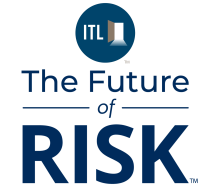In the last half of 2024, there were over 300 announced M&A transactions in the insurance space, valued at more than $20 billion. While the number of deals was down due to economic uncertainty, persistent high interest rates, and regulatory scrutiny, deal value was higher than normal.
What's driving a substantial amount of insurance M&A activity?
The third-party administrator (TPA) market.
TPA investment and acquisitions are nothing new. But several factors are creating a hotter market, encouraging acquisitions now and over the next few years:
- Private Equity Demand: Private equity interest is driven by a desire to deploy capital and achieve greater returns through growth potential and operational efficiency.
- Top Line Growth: TPAs are embracing a growth-through-acquisition model – improve top-line growth through acquisition, then implement cost takeout initiatives to improve business unit margin.
- Market Consolidation: TPAs have to achieve critical size to effectively provide services across multiple lines of business and remain relevant in the market – consolidation is how larger TPAs remain relevant.
The result is clear – acquire or be acquired. As a TPA, your acquisition strategy is either to add services to provide multiple lines of business at scale or become focused on a particular niche and establish market dominance through expertise.
Where Do TPAs Go From Here?
In the midst of this acquisition rush, TPAs (and other interested parties) are always seeking the next big opportunity for growth. But not all growth opportunities are the same. TPAs need to be forward-thinking. Over the next decade, the best TPAs will:
- Leverage automation, technology, and AI to significantly reduce both labor and non-labor costs to aggressively improve margin
- Develop a customer-centric selling model through upsell and cross-sell opportunities, using multiple lines of business to meet evolving client needs and gain greater client penetration
- Provide clients with expertise to solve increasingly complex challenges through services and claims administration
- Use a target operating model that encourages integration of new acquisitions to achieve synergies and improve overall enterprise performance through shared services and enterprise corporate functions
No single acquisition will fit every TPA – a variety of factors will influence which particular acquisition makes sense to a given firm.
Instead, TPAs that are seeking to grow across multiple lines of business should focus on markets that are primed for expansion. While there are several opportunities, there are four growth markets that TPAs should strategically evaluate their desire and capabilities to serve:
1. Healthcare Claims and Administration:
The combination of increasing costs around healthcare administration, complexity of health claims, and shifting demographics suggest a growing, lucrative market for TPAs. But investors have more than just top-line revenue growth to focus on. AI and automation opportunities can significantly reduce medical errors, accelerate claims processes, and reduce costs by reducing manual effort and standardizing key processes. TPAs have an additional reason to enter this space – the growth of the market is not just driven by processing insurance claims. Employers seeking to self-insure and expanding healthcare networks (e.g., hospital networks) provides another customer base. There are a variety of services that can be provided – bill review, long-term care assistance, or mental health care. Future-minded TPAs will assess opportunities to leverage data and analytics insights to provide opportunities to reduce healthcare costs. PE firms may seek to purchase or develop a TPA to administer claims associated with wholly owned long-term facilities.
2. International Claims
The insurance market in emerging economies is expected to experience significant growth over the next five to 10 years, far outpacing growth in established Western markets. Consider that life insurance premiums are expected to grow by approximately 6% in countries such as China, India, and Latin America, compared with the standard 1-3% annual growth seen in the U.S. Property and casualty (P&C) is expected to follow a similar trend. Protection gaps need to be addressed, and a strengthening middle class will have disposable income to address them. Insurance providers may have an interest in entering those markets but will likely partner with claims administrators to support global markets. Growth in the market and the opportunity to leverage global shared services models to significantly reduce cost position TPAs to be critical as carriers expand. Strategically, global TPAs will need to consider regional strategies to navigate geopolitical risk (e.g., supply chain/tariff challenges and international sanctions against countries).
3. Cyber-Related Claims
Increasing frequency and severity of cyberattacks, such as ransomware, data breaches, and phishing, are driving demand for cyber insurance, particularly for businesses. Small and medium-sized businesses are becoming more aware of their vulnerabilities. TPAs have at least two types of services to focus on through acquisition. One opportunity is in the B2B space, where TPAs can provide claims adjudication and processing in support of businesses facing a variety of cyber-related issues. In that space, TPAs may focus on fraud detection services, particularly combating AI-enhanced threats. The second opportunity is for TPAs to focus on cyber insurance sold through an embedded insurance model. One example that will become increasingly common: Individuals who purchase software or AI tools will have the opportunity to buy basic cyber insurance at the point of sale, with the opportunity to enhance coverage for specific AI protection gaps (e.g., protection against intellectual property (IP) infringement tied to AI-driven operations).
4. Legal Claims Administration
Over the next decade, legal claims administration will present another frontier for TPAs seeking to grow. Specifically, class action lawsuits and mass torts will provide opportunities for TPAs to administer legal claims. Class action lawsuits will arise, particularly as data breaches and greater data connectivity will take center stage for businesses across all industries. And mass torts will continue to be more relevant – evolving legal theories are increasing mass tort possibilities, both through expansion of harmed parties and creative theories on liability. For example, public nuisance claims were used in opioid litigation and are being considered for climate change and data privacy litigation. The challenge for law firms is that they do not do well in handling settlement, tracking down claimants, and managing documents. TPAs that can leverage technology to simplify and support law firms will position themselves well in the market. For example, smart contracts could automate the distribution of settlement funds to class members. Once eligibility criteria are verified, the smart contract could release payments directly to claimants, reducing administrative costs and delays.
The Price of Admission
While each of these areas presents a significant growth opportunity for TPAs, there are barriers to entry.
- Regulatory and Compliance Challenges: Each of these services has stringent regulatory considerations – for example, international claims administration requires understanding jurisdiction-specific laws and regulations. TPAs need to have a plan for how they will satisfy the compliance obligations associated with any new business unit or line of business.
- Technology Integration: Most TPAs rely on proprietary systems for claims processing and data management. This forces TPAs to take one of two paths – allow newly acquired businesses to continue to run as-is, without integration, or attempt data and platform migrations. Organizations need a technology integration strategy as a part of their M&A.
- Market Competition and Valuation: In the current economic environment, high-interest rates and economic uncertainty make only the best deals viable. Increased competition drives up valuation, making deals less financially viable to many of the firms. Specialized TPAs, such as healthcare of cyber-focused TPAs, face valuation inflation risk.
TPAs attempting to grow will overcome these challenges through comprehensive strategy and a commitment to providing services to carry them into an evolving market. TPAs should use strong due diligence, explore partnerships, and evaluate lessons learned from competitors' acquisitions to give themselves the best chance for success.








